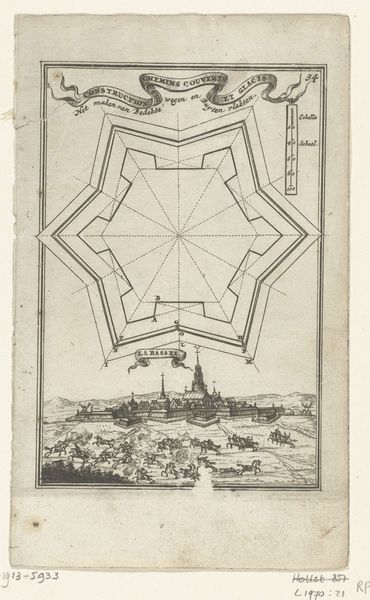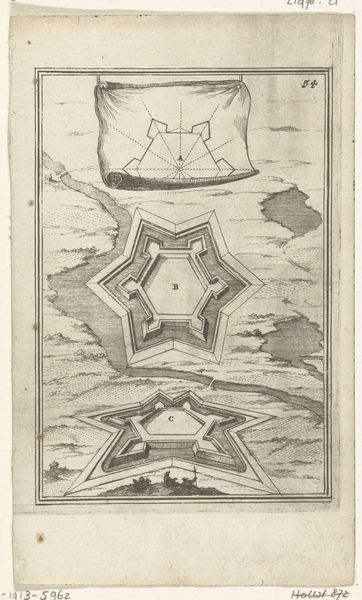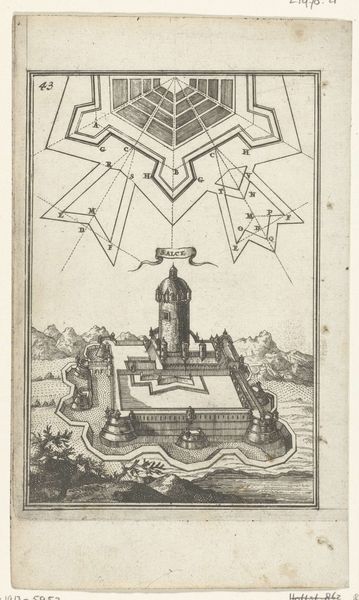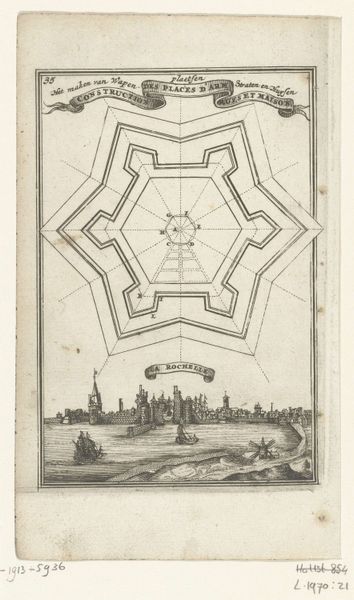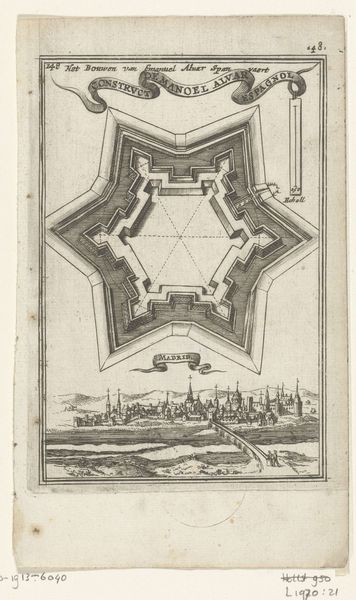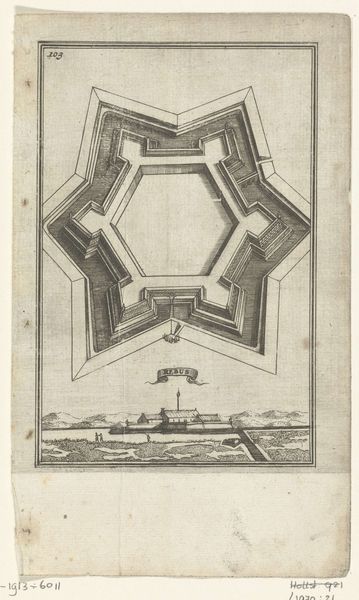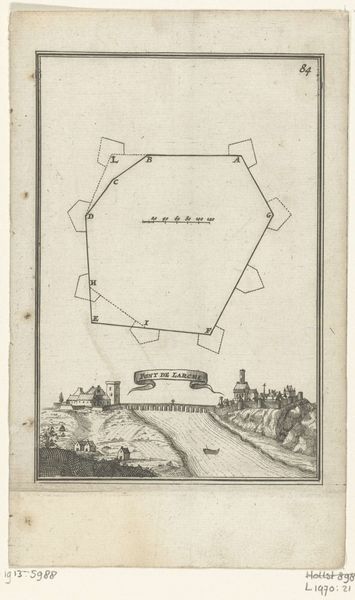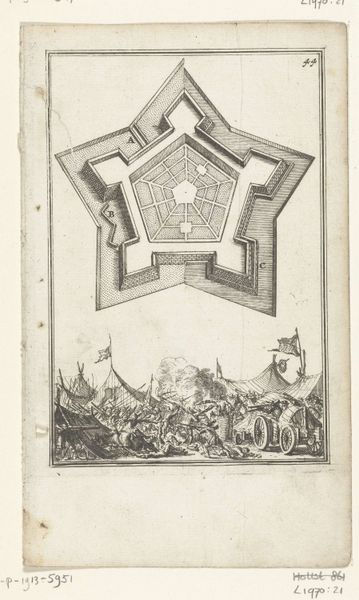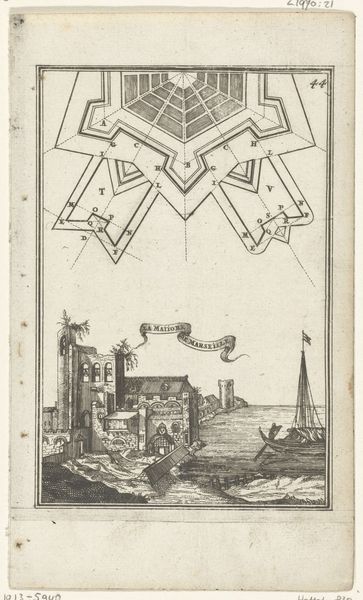
Illustratie voor 'Den Arbeid van Mars' van Allain Manesson Mallet 1672
0:00
0:00
romeyndehooghe
Rijksmuseum
drawing, print, ink, engraving
#
drawing
#
baroque
# print
#
landscape
#
ink
#
history-painting
#
engraving
Dimensions: height 185 mm, width 109 mm
Copyright: Rijks Museum: Open Domain
Editor: This is "Illustratie voor 'Den Arbeid van Mars' van Allain Manesson Mallet," a 1672 ink and engraving by Romeyn de Hooghe, housed at the Rijksmuseum. The combination of a schematic diagram with a chaotic battle scene strikes me as quite odd. What jumps out at you, looking at the composition? Curator: Note the sharp contrast between the highly structured geometric form in the center—almost an abstract star—and the landscape rendered with what appears to be, on initial assessment, almost gestural freedom at both the top and bottom of the work. What effect is achieved by this visual tension? Editor: It feels like two separate worlds colliding! The top section seems serene and detached, a bird's-eye view. Down below is all the action. Curator: Precisely. Observe how the geometric figure dominates the center; it bisects the image, preventing a seamless transition between landscape depictions. Its stark lines and labelled segments offer a kind of logical framework, perhaps even a method for the madness of the scene. This is, after all, meant to be illustrative; how effective do you find its organizational structure? Editor: I see what you mean. It does compartmentalize the image, making the battle scenes more digestible. But is there an inherent beauty in this division? The lack of blending feels purposeful, almost confrontational. Curator: Beauty resides within structure, in this case, perhaps a mapping of power, control visualized through form, and consider, too, its graphic potential. The clean lines of the star create an independent plane with an intense two-dimensionality that disrupts the perspective in the bordering landscape. What might its material qualities, the incised lines, tell us? Editor: Fascinating. I’m starting to see how the stark contrast emphasizes both the control and the chaos, pushing them to their extremes, materially and structurally. Thanks! Curator: A closer analysis of this engraving prompts us to look beyond the surface to appreciate its formal complexities, offering insight into art and how to view its structural and organizational construction.
Comments
No comments
Be the first to comment and join the conversation on the ultimate creative platform.



